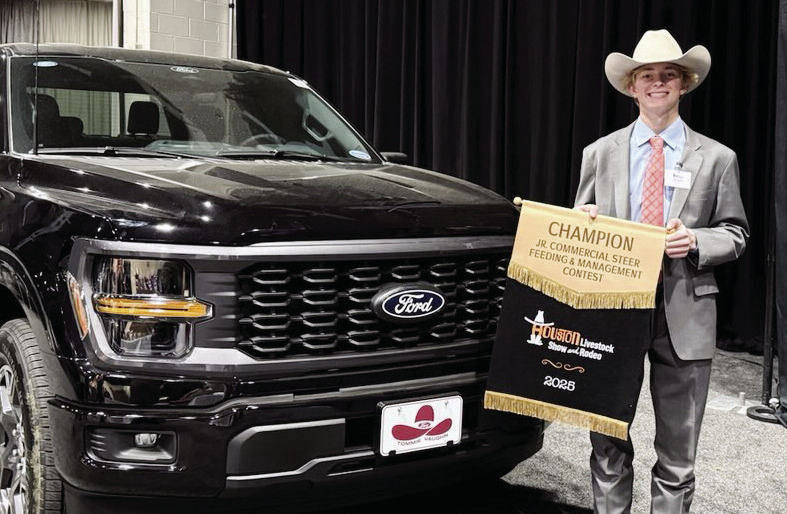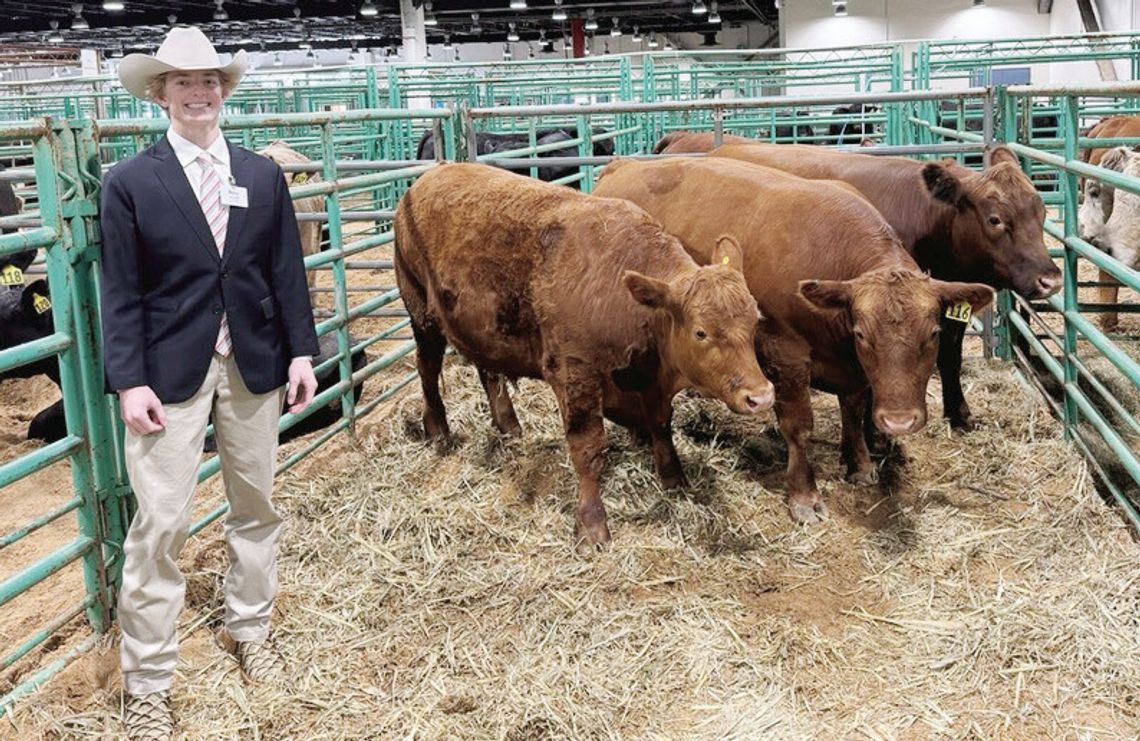A Blanco High School junior was all smiles after winning a rigorous contest at the recent Houston Livestock Show and it’s been generations in the making.
“Levi is a sixth-generation rancher,” said Dr. Steven Golla, who is a veterinarian and the father of Levi Golla. “Our family came over from Germany and Poland in the mid-1800s and settled in the San Antonio area and we’ve been raising cattle ever since. We take ranching very seriously as a family and we raise a lot of beef.”
As the champion of the Junior Commercial Steer Feeding and Management Contest, 17-year-old Levi Golla earned a Ford F-150 pickup truck.
“He’s going to be getting it soon and he’s excited to have a brand-new and reliable vehicle to take with him off to college,” Dr. Golla said.
This year’s exhibition ran from March 4-23.
AN INTENSE CONTEST
The Houston Livestock Show, which dates back to 1932, is the world’s largest. The event draws 30,000, entries each year but the Commercial Steer Feeding and Management Contest is at another level.
“He’s been competing in the commercial steer feeding contest for nine years, starting in third grade,” Dr. Golla said. “Many kids don’t participate in this particular contest because it’s more difficult and it’s intense. This is a ‘fed beef contest,’ meaning the animals are raised as if they were going to be sold for meat consumption. The kids have to show that they’ve made a profit with their projects, starting with not overpaying for the cattle.”
The first hurdle is just finding the highest- quality cattle for the money they have budgeted.
“Then, they feed them in line with the standards of beef raised for food consumption with the goal to produce prime carcasses,” Dr. Golla said.
For the Houston show, contestants raise a pen of three cattle all while keeping a careful tally of their finances and other data.
“They track the steers’ weight, average daily gain, the amount of feed used, medicines and all the other aspects of a business plan,” he said.
Only around 25% of the total grade is based on the animals, which are evaluated by industry experts.
“The other 75% is based on the kid’s knowledge of their project and the industry as a whole,” Dr. Golla said. “They take college- level animal science exams in meat science and meat identification and then they take a quiz that can be on any topic within the cattle industry.”
A large part of the knowledge portion comes from interviews.
“Out of 175 contestants, the top eight go into a final interview,” Dr. Golla said. “They have to sit in front of a panel consisting of an agricultural banker, a feedlot owner-operator, a packing plant owner-operator, a cattle buyer and a veterinarian familiar with cattle. For 45 minutes, the industry officials find out what the kids know and don’t know. It’s very intimidating. Levi was the top interviewer and that put him over the top. He’s the first kid in the history of the contest—which goes back into the 1950s—to have been Reserve Grand Champion and Grand Champion at both San Antonio and Houston.”
Dr. Golla, a bovine specialist, admitted that his son might have had a little bit of an advantage.
“He grew up with it; Levi’s been traveling the roads with me ever since he was old enough to get in my truck,” he said. “We pulled calves, did necropsies and treated animals at ranches all around the state.”
Although Levi is not sure of his destiny at this point, his father feels that ranching will fit into the picture.
“Like me, he is interested in medical science,” Dr. Golla said. “Whether or not ranching is his full-time job, I think he’ll continue the tradition of raising cattle. He’s at a crossroads of deciding whether he wants to do veterinary medicine or sports medicine.”
Levi Golla is one of many students who are part of Blanco ISD’s Future Farmers of America program.
“His success would not have been possible without (FFA adviser) Travis Kersten and the school’s support,” Dr. Golla said. “They’ve been instrumental by allowing these extracurricular activities and supporting the kids. Not every school district does that.”



